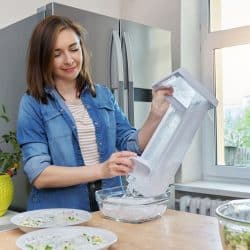There's something about the water Starbucks uses that makes drinks that much more enjoyable. It raises the question—what water filters does Starbucks use? Additionally, can you get it in your home? If that's your concern, you're in luck! We have some details to share with you!
Starbucks representatives and former employees claim Starbucks uses a three-stage filtration system. If you're looking for the specific brand they use, Pentair is one name commonly mentioned.
Regardless, you can install a three-stage filtration system in your home if you want Starbucks-quality water.
If you're new to filtration systems, there's no doubt more questions will arise. For example, what is a three-stage filtration system? Is it different than the filters you use at home? These are some of the concerns we'll address in detail. To learn more, keep reading.
What Filters Does Starbucks Use?
![What filters does starbucks use, What Water Filtration System Does Starbucks Use? [& Can You Get It In Your Home?]](https://kitchenseer.com/wp-content/uploads/2022/12/What-filters-does-starbucks-use.jpg)
There's something in that Starbucks water. If you pay attention to the little details, you'll notice their water isn't the ordinary water you get at home. So, how do they do it?
As a former employee claims, all Starbucks stores use three-stage carbon and sediment filtration systems. The tricky part is determining the type they use. While a reverse osmosis system is a common answer, other employees dispute it.
It all depends on the region. Some parts of the United States have hard water, while others have soft water; this is a crucial detail to consider. Water hardness varies from place to place.
If you want an answer that applies to your situation, you'll have to check the water hardness in your state. States with hard to very hard water levels will likely have Starbucks stores that use reverse osmosis filtration systems.
Areas with soft to slightly hard water will likely have Starbucks stores that use high-quality three-stage carbon and sediment filtration systems.
It begs the question—what's the difference between these two filtration systems?
Three-Stage Filtration System Vs. Reverse Osmosis Filtration System
There's a lot of ground to cover. So, let's start the comparison by looking at a three-stage filtration system. How is it any different than something like a Brita filter?
A big hint lies in its name—three-stage filtration. As you can guess, water goes through three stages of filtration in this system. The three filters the filtration system will use depend on the manufacturer.
In any case, three-stage filtration systems allow for a more thorough filtering process. Each filter will target different types of contaminants.
Since one former employee states they use a carbon and sediment filtration system, we can assume it uses a sediment filter with two types of carbon filters.
Some systems use sediment, carbon, and kinetic degradation fluxion filters. We don't have to look at this system since most answers online don't mention a kinetic degradation fluxion filter.
How It Works
Three-stage filtration systems work by making water travel through three filters before it gets to you. In the first stage, water will go through a sediment filter. So, it will remove large particles before it moves to the second stage.
In the second stage, water will go through a submicron filter—usually a carbon filter. This filter is in charge of removing contaminants such as:
- VOCs
- Chlorine
- Lead
- Iron
- Zinc
Finally, water will move through a third filter; this one is in charge of the aesthetic portion. In other words, it's responsible for the flavor and odor of the water.
Reverse Osmosis Filtration Systems
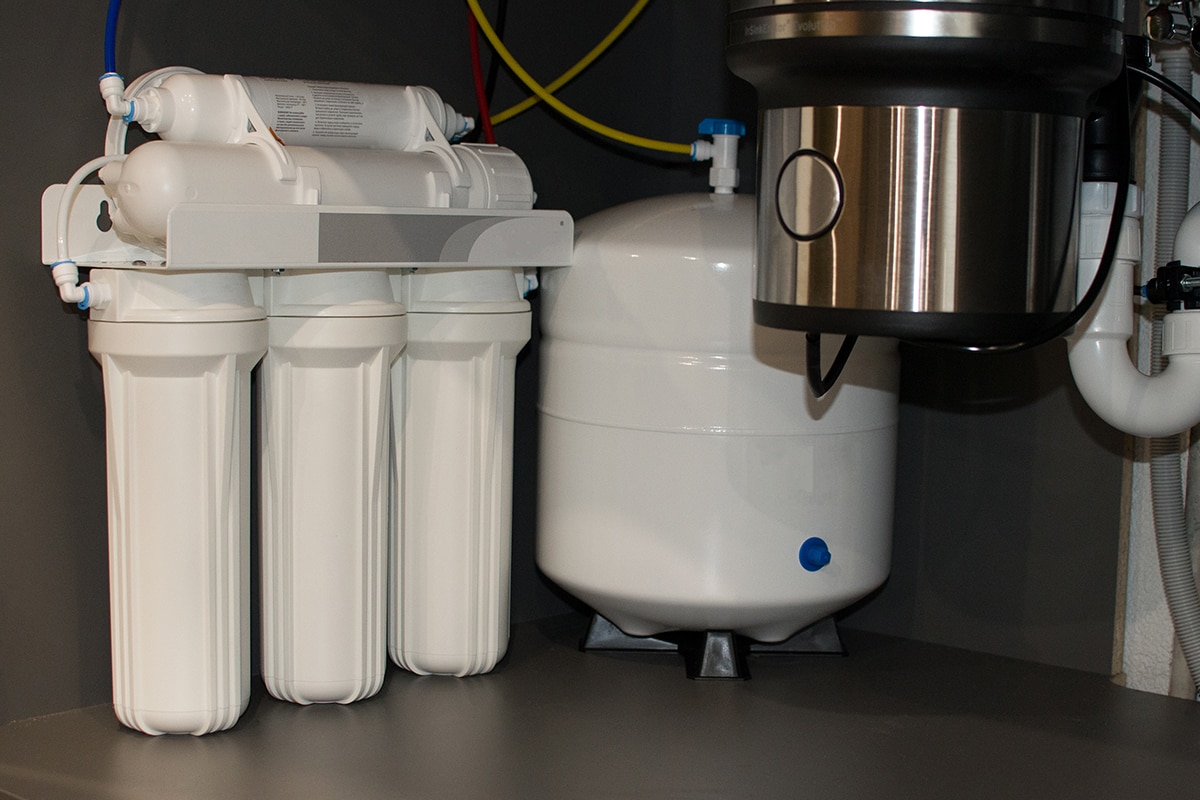
The other water filter system Starbucks uses is a reverse osmosis filtration system. It works similarly to a three-stage filtering system.
However, the third filtering process is what makes it different. Let's go over how it works.
How It Works
The process starts by moving water through a pre-filter. The pre-filter is in charge of removing sediments. So, it will remove large particles from the water before moving to the second stage.
From here, it will move to a carbon filter. As mentioned, carbon filters are in charge of removing smaller particles. It's also responsible for the odor and flavor of the water.
Then, water will move through a semi-permeable membrane. The system will use pressure to push water from the more concentrated side (contaminant side) to the less contaminated side.
Finally, the less concentrated side will move to a holding tank. It will hold clean water there until you open the faucet.
What Do Semi-Permeable Membranes Remove?
Semi-permeable membranes are more capable of removing small contaminants than carbon filters. The pores on the membrane are small enough to remove salt from water; fluoride is another mineral it can remove.
All-in-all, semi-permeable membranes remove a wide range of contaminants in the water that carbons filters can't. Thus, you get water that is purer than you can usually get.
Which System Should You Get For Your Home?
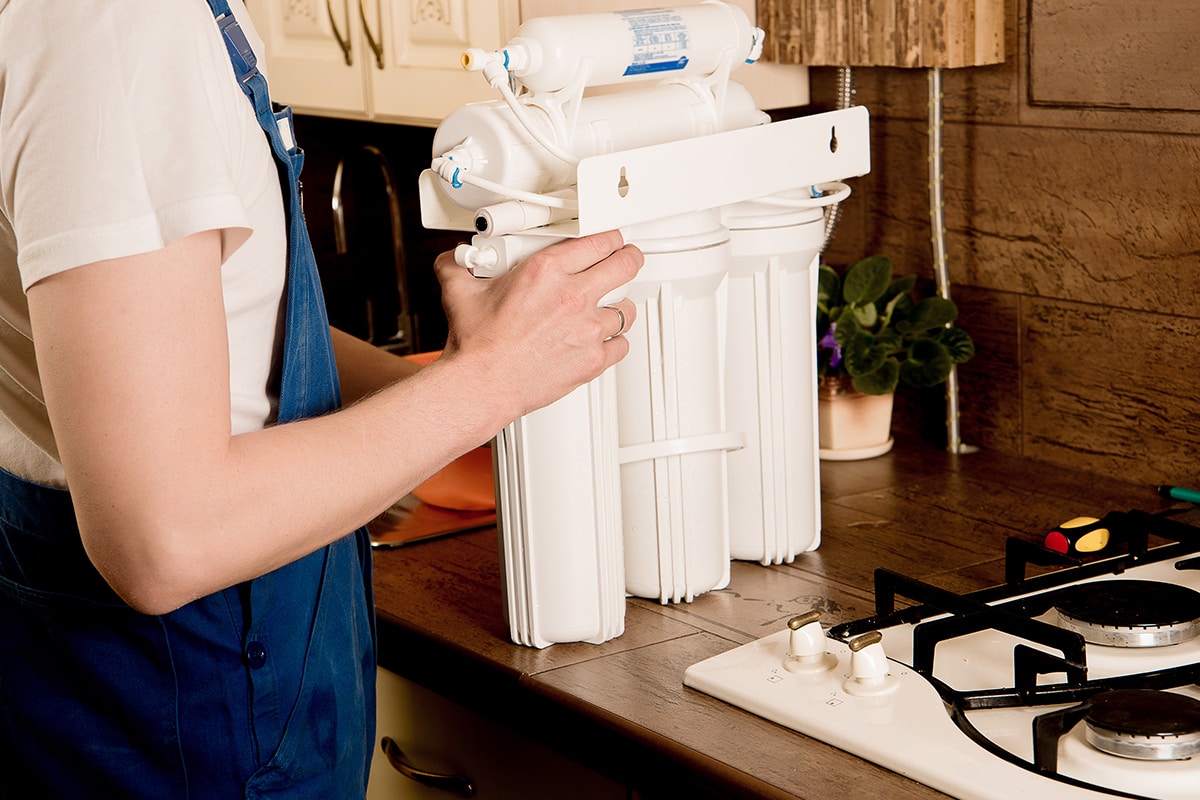
We know the two systems Starbucks uses, but there's one more detail to consider. Can you get it in your home?
Sure you can! However, the solution isn't as simple as choosing one of these two systems. The important question is—which one should you choose?
Reverse osmosis systems can be redundant in some areas. On the other hand, three-stage filtering systems might not be enough in others. Let's try to narrow our choice.
What Are Some Factors To Consider?
Various factors go into choosing one of these two systems. The first factor is where you get your water. In other words, how is water supplied to your home?
If you're using water from a well, there are likely more chemicals and pathogens in the water that will need to be filtered out. Reverse osmosis filters are the best to ensure you remove most of them.
Though, you won't need to install a whole house system. There are RO systems that professionals can install under the kitchen sink. Of course, you can install it yourself, but it requires some plumbing knowledge.
RO systems are a good choice for people that worry about specific contaminants that standard filters can't remove. Here's a video that goes into more detail about choosing an RO system:
Why A Three-Stage Filtering System Is The Better Choice
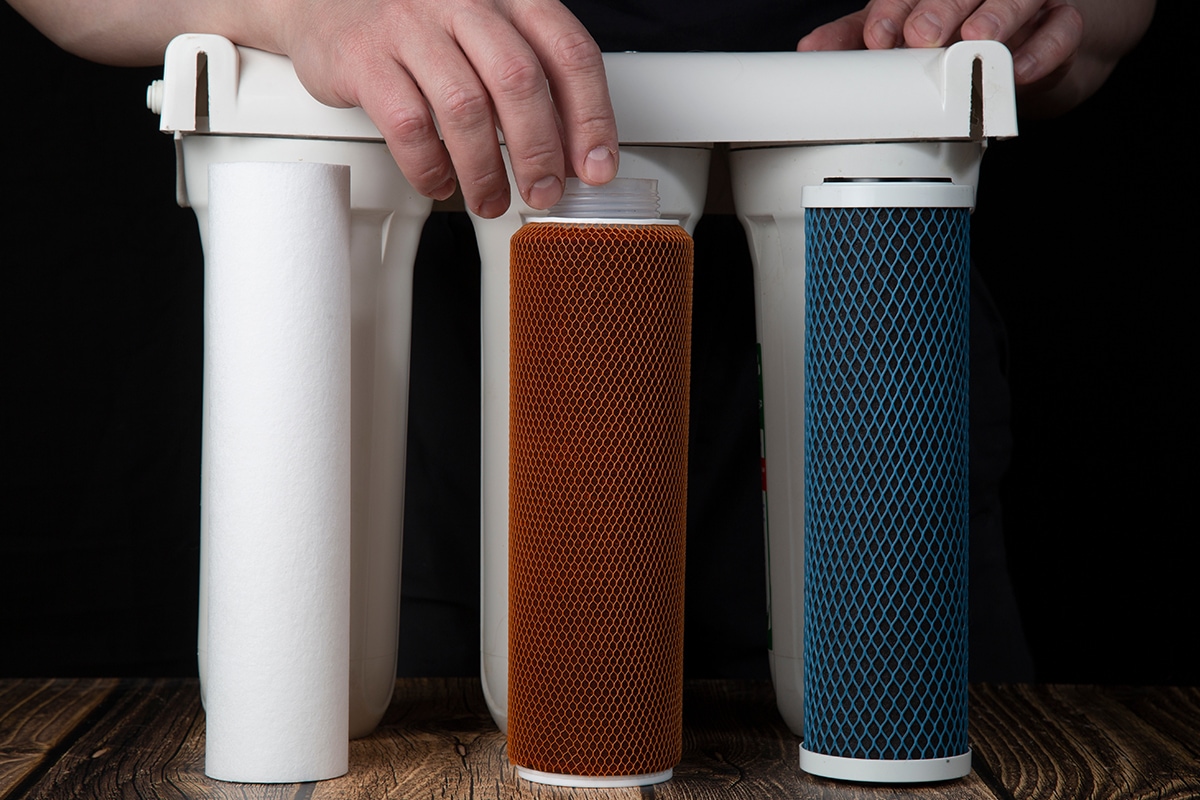
Since we're looking to achieve Starbucks-quality water, aesthetics is probably your main concern. So, you'd like to have the same water flavor at home.
For this reason, a three-stage filter system is probably the best choice for your situation. As mentioned, it all depends on the water hardness in your area.
People who live in cities most likely receive municipally-treated water. Therefore, the water will be relatively free of chemicals and bacteria. Of course, this is because of the use of chlorine.
Chlorine is a disinfectant professionals use to disinfect water, but it leaves a distinct flavor and odor. Activated carbon filters are good enough to remove chlorine from your water; there's no need for an RO system in this case.
Click here to see this filter system on Amazon.
Why Does Starbucks Use Filtered Water?
The answer to this question might seem straightforward. After all, every store should use clean water for their drinks. However, Starbucks goes the extra mile to filter its water.
How many homes do you see using a three-stage filtering system? So, that raises another concern. Why do they use it?
It might be surprising, but water plays a large part in a brew's flavor. It's something you might've experienced. Starbucks sells blends you can use to make their coffee at home.
Yet, the flavor is never the same. So, you try to adjust the recipe and whatnot. Nevertheless, the cup you brew at home never matches the one you get in-store. What on Earth could be the problem?
The Best Water For Coffee
It's the water! Very hard and soft water isn't the best for bringing out a brew's flavor. Hard water carries tons of minerals that can bring out the bitter notes in coffee.
On the other hand, soft water doesn't contain enough minerals that can help with extracting flavors. In other words, it's too pure.
The best water for coffee contains a slight concentration of minerals. In addition, it should be chlorine-free. Three-stage filtration systems help us achieve this!
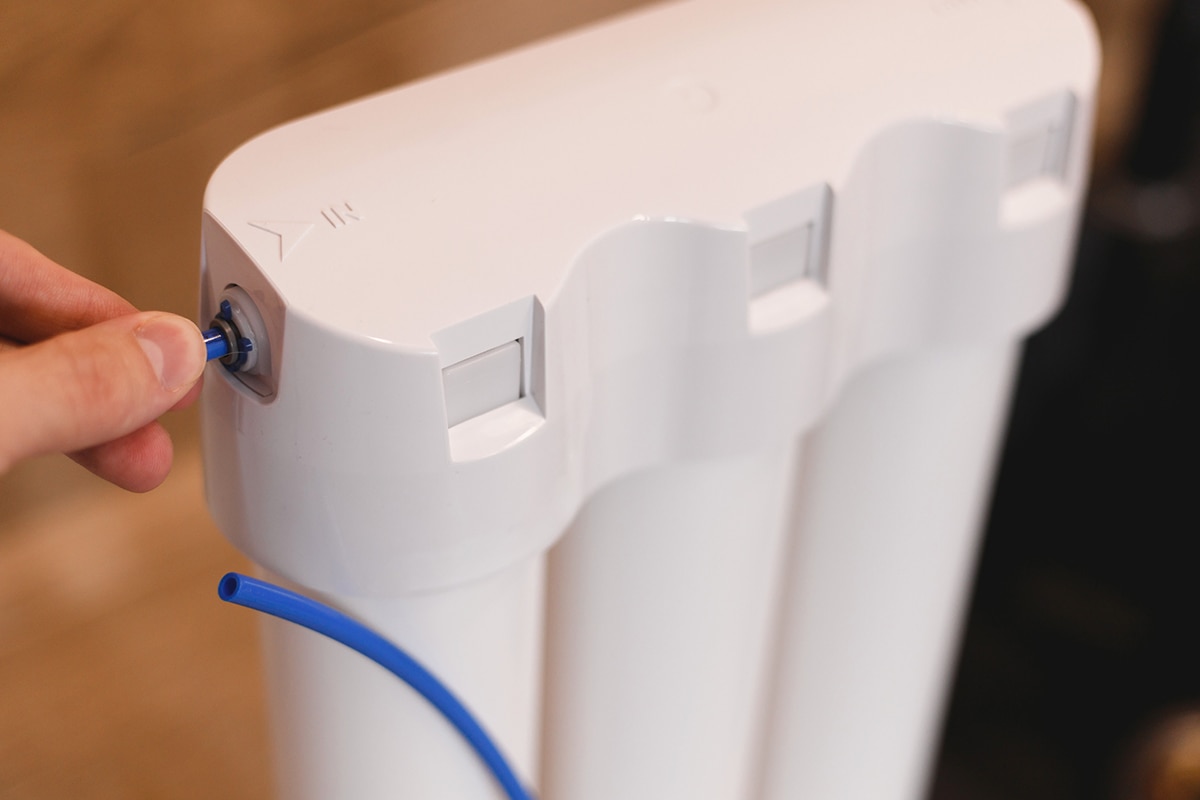
In Closing
Starbucks delivers quality drinks—we know that much. As we've found, their water plays a large part in that quality. Depending on the area, Starbucks uses reverse osmosis or three-stage filtration systems to get quality water for its drinks.
We hope you found this informative. Before you go, do you have other water filter concerns? Here are other filter topics you can check out.
Does Fridge Filter Remove Chlorine? [Benefits Of Filtration Explained]
Can A Refrigerator Filter Well Water?


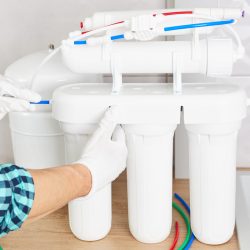
![Installing of a fridge water filter on a modern appliance, Does Fridge Filter Remove Chlorine? [Benefits of Filtration Explained]](https://kitchenseer.com/wp-content/uploads/2022/05/Installing-a-fridge-water-filter-on-a-modern-appliance-250x250.jpg)
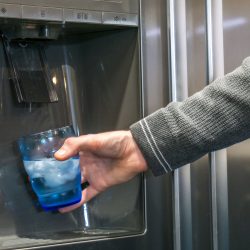
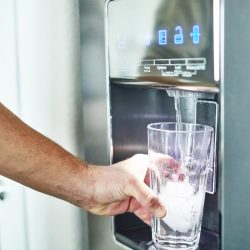
![Removing a refrigerator water filter in a modern appliance, How Long Should Refrigerator Water Filters Last? [And When To Replace Them]](https://kitchenseer.com/wp-content/uploads/2022/01/Removing-a-refrigerator-water-filter-in-a-modern-appliance-250x250.jpg)
